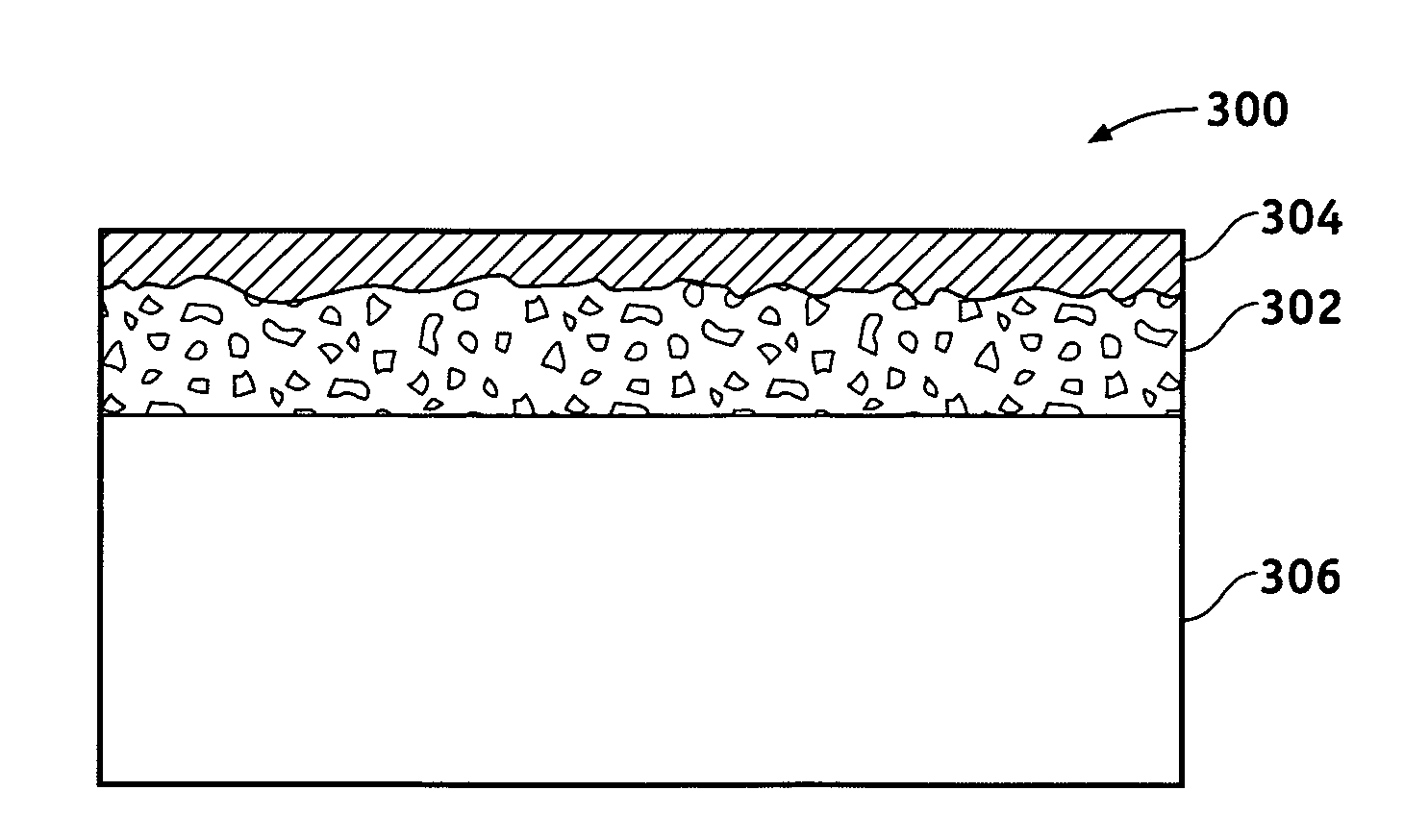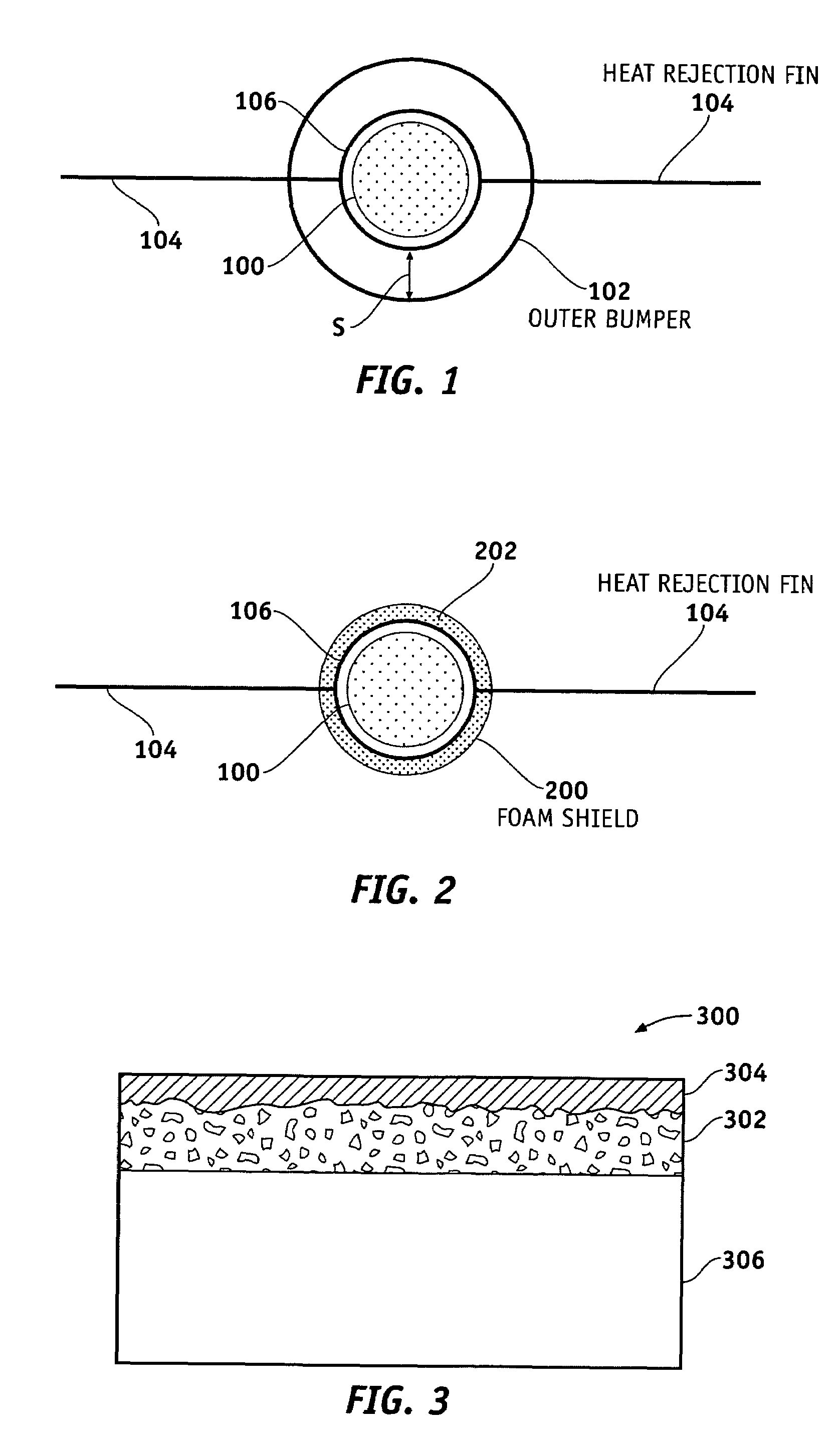Lightweight protector against micrometeoroids and orbital debris (MMOD) impact using foam substances
a technology of micrometeoroids and orbital debris, applied in the direction of protective clothing, building components, armour, etc., can solve the problems of significant weight penalty on a protected structure, significant temperature drop on the outer surface of the shield, and serious damage to an unprotected spacecraft. , to achieve the effect of light weigh
- Summary
- Abstract
- Description
- Claims
- Application Information
AI Technical Summary
Benefits of technology
Problems solved by technology
Method used
Image
Examples
Embodiment Construction
[0012]The following detailed description is merely exemplary in nature and is not intended to limit the invention or the application and uses of the invention. Furthermore, there is no intention to be bound by any expressed or implied theory presented in the preceding technical field, background, brief summary or the following detailed description.
[0013]Various embodiments of the present invention pertain to the area of protecting a device such as a spacecraft from the impact of MMOD. To overcome the disadvantages of conventional protective shields with respect to weight and heat dissipation, exemplary embodiments of protective shields are configured with lightweight foam materials such as metal, ceramic, or organic. The porous structure of the foam material can enable diffusion of an impact shock and debris, and the specific configuration of the foam shield can be tailored to optimize heat dissipation characteristics.
[0014]As noted in the Background, conventional multi-layer metal ...
PUM
| Property | Measurement | Unit |
|---|---|---|
| porosity | aaaaa | aaaaa |
| depth | aaaaa | aaaaa |
| hyper-velocity | aaaaa | aaaaa |
Abstract
Description
Claims
Application Information
 Login to View More
Login to View More - R&D
- Intellectual Property
- Life Sciences
- Materials
- Tech Scout
- Unparalleled Data Quality
- Higher Quality Content
- 60% Fewer Hallucinations
Browse by: Latest US Patents, China's latest patents, Technical Efficacy Thesaurus, Application Domain, Technology Topic, Popular Technical Reports.
© 2025 PatSnap. All rights reserved.Legal|Privacy policy|Modern Slavery Act Transparency Statement|Sitemap|About US| Contact US: help@patsnap.com


